After the first round of auctions with Blue Zoo Aquatics, we came to the mutual conclusion that sticking with our original plan, one of drop shipping the fish from here in Duluth to the final recipients, is going to be our preferred route going forward. I had so many direct inquiries asking why I had forced the fish to go through an extra trip to the west coast, and in truth, neither Mark nor myself had originally planned that. Quite simply, with a brand new daughter who has a penchant for screaming constantly and uncontrollably, it felt as if the only way we’d ever get the ball rolling on sales was to have me make one shipment to Blue Zoo. It worked, but public sentiment was definitely against the extra trip.
With our decision to stick with drop shipping from Duluth, this means I need to hold, and segregate, most all of the maroons here to ensure that they don’t turn on each other in a murderous rage as fish are removed from the community. This means that all of the Maroons in my holding cubes, the ones that were destined to be distributed as backup pairs, held back for test pairings and breedings here, as well as smaller specimens, all need to be moved out to permit me to segregate the remaining 25 or so fish that we’ll be selling. I’m running out of space.
In an effort to free up holding cubes, I’m pushing to place and pair many of the fish I’ve been holding in segregation. As you’ve probably read in the past, I’ve planned several backup pairs to be spread around the city and country, just in case anything were to ever happen to our home or fishroom. So, this Friday, August 2nd, 2013, another one of those pairs was selected from my holdbacks and placed under the care of the staff at the Great Lakes Aquarium (GLA), our local public aquarium situated on the shores of the Duluth Harbor / St. Louis Bay, Lake Superior.

Great Lakes Aquarium in Duluth, Minnesota. Lake freighter Canadian Transport passing Duluth Aerial Lift Bridge in the background : Photo by Tmajewski, under Public Domain license (THANKS Tmajewksi!)
The Great Lakes Aquarium is mainly a freshwater aquarium (all “permanent” exhibits are freshwater) as the mission is primarily to educate visitors about the waters in our region. As such, it’s fair to say that when we first moved to Duluth, the marine hobbyists I knew didn’t exactly give it a “must see” rating. I think it took a year and a half before we ever stepped foot in our own public aquarium.
Since that time, I’ve come to grow fond of our local aquarium. The facility is wonderful, the building is beautiful. With a family membership, we can escape there for an hour or a day, and it’s very kid friendly. Ethan loves it (the water table, the treehouse slide, and the bear den are his perenial favorites).
Even though the GLA has suffered budget setbacks and more than one oversight change since it opened in 2000, it’s worth the visit if you’re here. I can only say things continue to improve and yes, more and more saltwater displays are making their way into the aquarium. Like it or not, I think everyone understands that “Nemo”, “Seahorses” and Otters are a likely larger draw than Largemouth Bass and Rainbow Trout; while the mission is most admirable, it’s difficult to accomplish if people aren’t lining up to see the same fish they caught when fishing the day before.
Ultimately, I look at the Great Lakes Aquarium and see an organization that is growing, refining, and only improving, something I can be ever more proud of to call my home aquarium and an institution that our city should be very proud of and continue to prioritize. Heck, with
Sepia bandensis on display from none other than Rich Ross at the Steinhart, and a fledgling new coral reef aquarium as part of the
Fire, Ice, and the Rise of Life (see
Lake Superior Magazine |
Great Lakes Aquarium website) introduction to the history of our region (which happens to include a new Chambered Nautilus exhibit), offerings that will draw the layperson in are on the uptick. There’s plenty of massive envy-inducing Brook Trout still on display, the likes of which I’ll never catch in the wild!

Another view of the Great Lakes Aquarium, now home of a Lightning Maroon Clownfish – Image by Randen Pederson under Create Commons License (thanks Randen!)
So when it came time to think about a public aquarium where I could place a Lightning Maroon for public viewing, I certainly had options. I grew up with the Shedd and still have acquaintances who work there. No doubt, many of my other friends who work at and run public aquariums would have welcomed the contribution, east coast or west, north or south. Ultimately though, my humble home of Duluth, Minnesota, is where the Lightning Project took place. It’s where a single wild variant spawns and tends here eggs, and where her progeny have grown up and in turn been sent back into the aquarium hobby. As much as the Lightning Project is a PNG story, a SEASMART story, a Pacific Aquafarms story, a Blue Zoo Aquatics story, or a Matt Pedersen story, it is also now a
Duluth story.
We’ll probably never have a MACNA in Duluth, MN. Heck, we’re lucky to get 10 people to a meeting of the Lake Superior Marine Aquarium Club (
LSMAC). For a small city that’s welcomed me and my family with kindness and support, it is only fitting that I give back to the home I hope I never have to leave. There really was only one choice, and having had the help of folks like aquarium staffers Barb and Heidi earlier in this project (
they actually were here and witnessed the spawning of the first successful offspring, the fish they are now holding), the Great Lakes Aquarium truly was the only and best choice. I’m really glad they accepted my offer.
The details of my donation to the aquarium are simple. The fish were provided freely (obviously) and the only stipulations were these. 1st, if the aquarium for some reason could no longer house the fish, that they be returned to me, and 2nd, the eggs are mine if I need them. In other words, they are a backup pair for my fishroom and another avenue of genetic diversity to help keep mutliple F1 pairs out there in production, which in turn keeps the genetics diverse in the greater population. The more F1 fish we have producing F2 fish, the better we are from a big-picture standpoint.
The Fish Donated to the Great Lakes Aquarium
In short, I hand delivered 1 Lightning Maroon, and one White Stripe Maroon sibling, to the Great Lakes Aquarium this afternoon. I’ve added to them to the offspring catalog and assigned them the ID’s GL1 and GL2 (I’m sure someone, somewhere, will name these fish more fitting names!) Here’s their photos (and links to their individual pages)

GL1 – a F1 PNG Lightning Maroon Clownfish donated to the Great Lakes Aquarium in Duluth, MN, USA
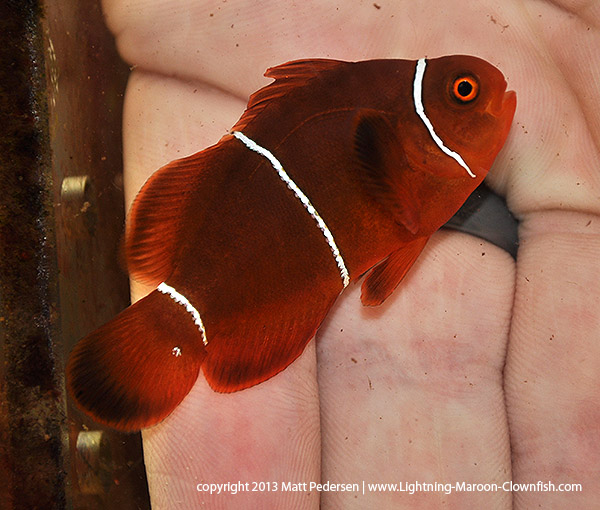
GL2 – a F1 PNG White Stripe Maroon Clownfish donated to the Great Lakes Aquarium in Duluth, MN, USA
The actual mechanics of ensuring the Great Lakes Aquarium was the recipient of a Lightning strike were fairly mundane. Fish were bagged…
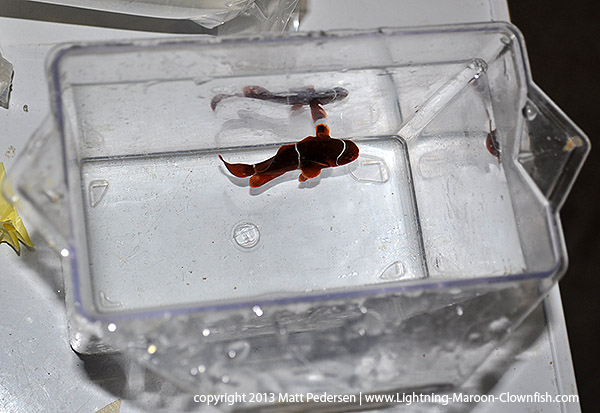
GL2, reading for bagging
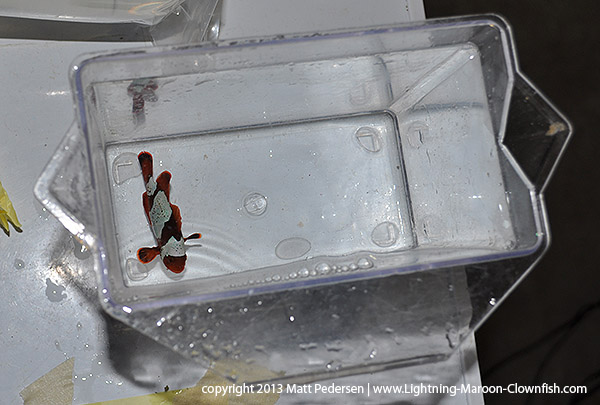
GL1, also reading for bagging
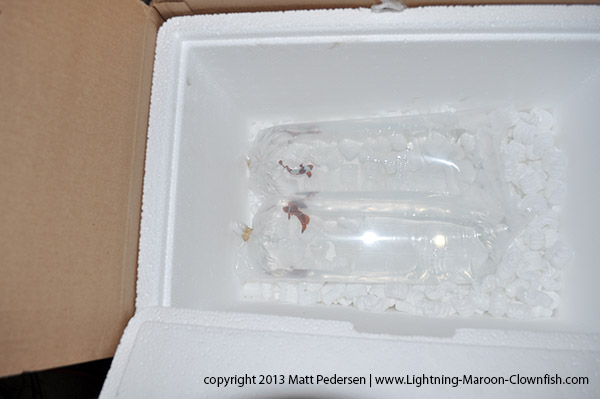
Even though it’s a 15 minute drive, the fish are bagged with oxygen and placed in a shipping styro. Nothing but the best…
…and simply driven to the aquarium. Just about as stress free a trip as they could ask for.
I gotta say, I kinda felt like Santa once I got there. I have never seen gossip travel so fast through a workplace; it seems like anyone who COULD get away and sneak a peek, did just that!
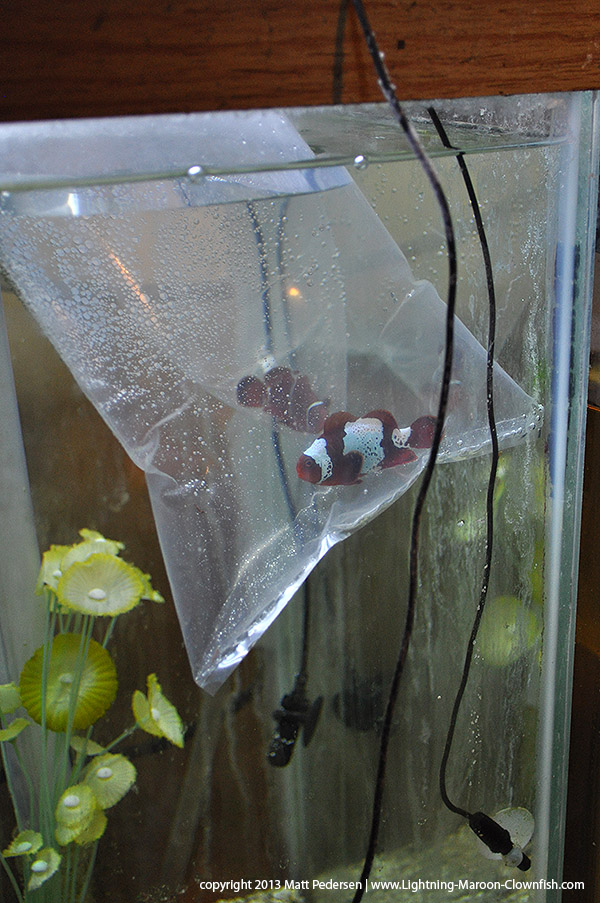
GL1 and GL2 floating for acclimation in the behind-the-scenes quarantine tank where they will be conditioned and paired before going on display.
Of course, I think Jadell (will withhold her last name for privacy) was both the happiest and most stressed, as I believe it is
she is the one who manages the marine exhibits (including the fantastic Seahorse breeding) and has been put in charge of the Aquarium’s Lightning Maroon and mate. She hides her nervous terror well behind that beaming smile. Don’t worry Jadell, I know that feeling; I knew it when their parents first showed up here.
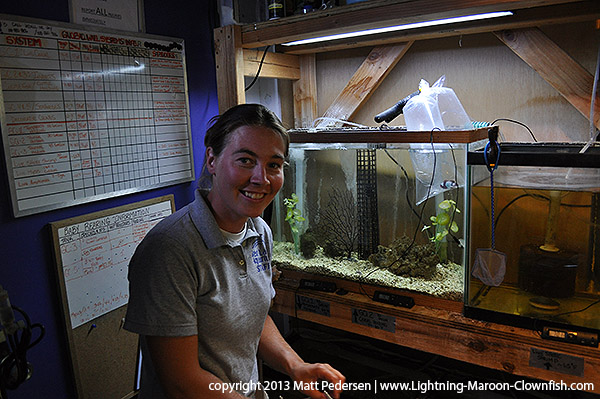
Jadell, you’ll do great, I know you will! And no worries, there are more if you need ’em.
No word on when we’ll have these fish paired and ready for display, but I think it’s going to take 3 to 6 months before a solid pairing can be created using segregation and forced size differentiation to ensure that the Lightning Maroon grows faster and larger than the White Stripe sibling.
When ready, Jadell has told me that this middle aquarium is due to be the new, revamped home for the pair.

The aquarium in the center is the currently planned new display home for the Lightning Maroon and her mate, when the time comes.
You can be sure that I’ll continue to watch this pair and post an update when there’s some news! You may never get to come into my house to see the original Lightning Maroon, but for the price of admission, someday soon you’ll be able to see one in person at the Great Lakes Aquarium.
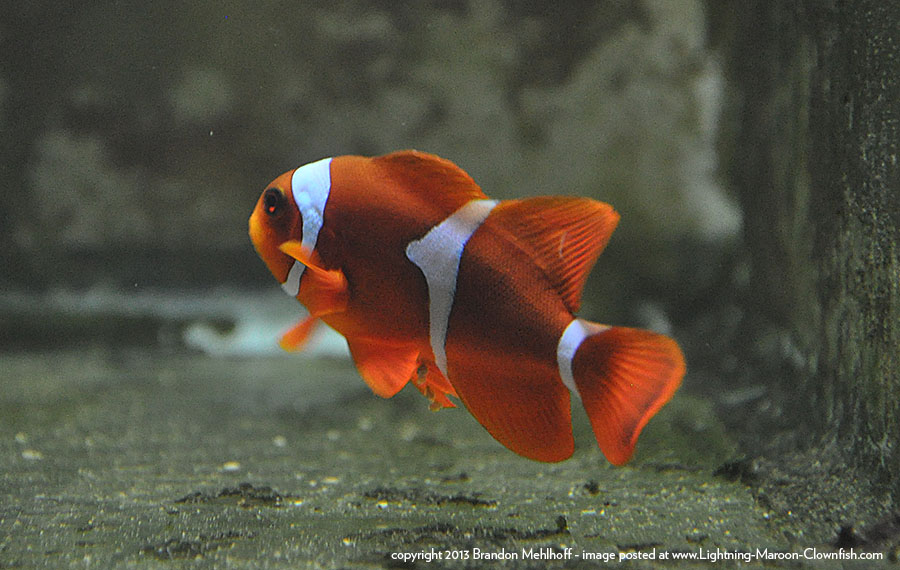
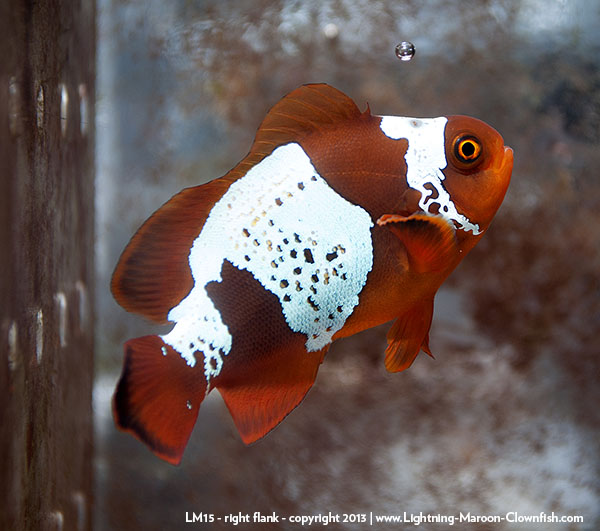

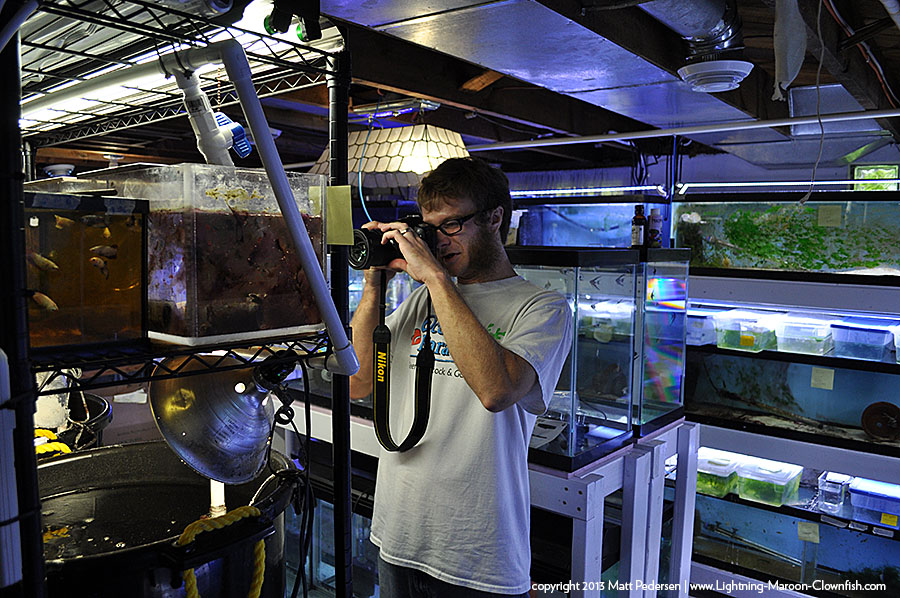
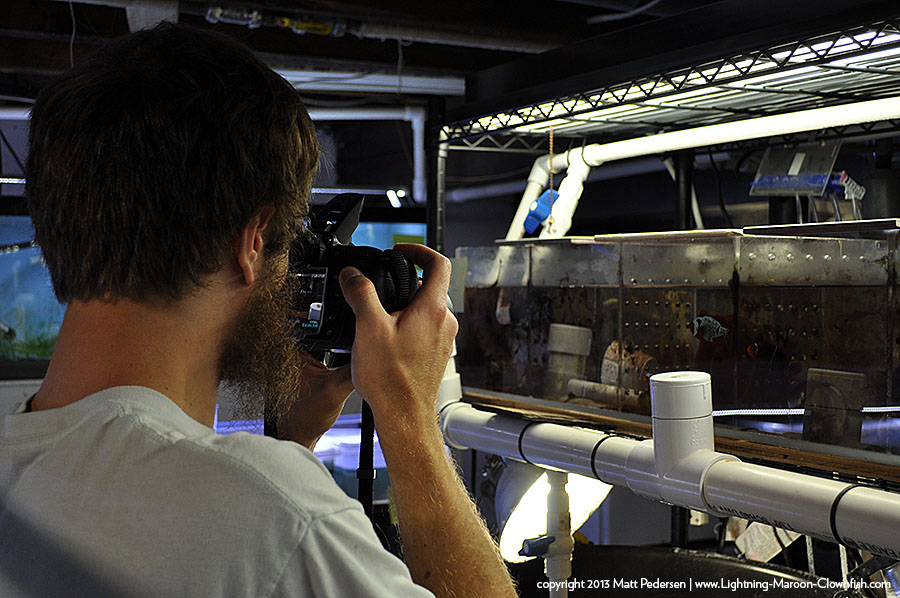
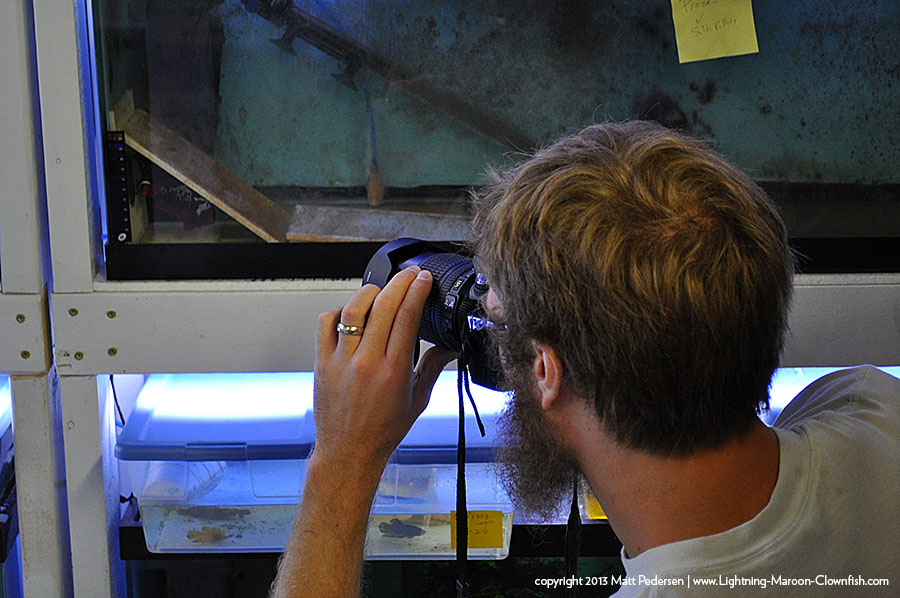
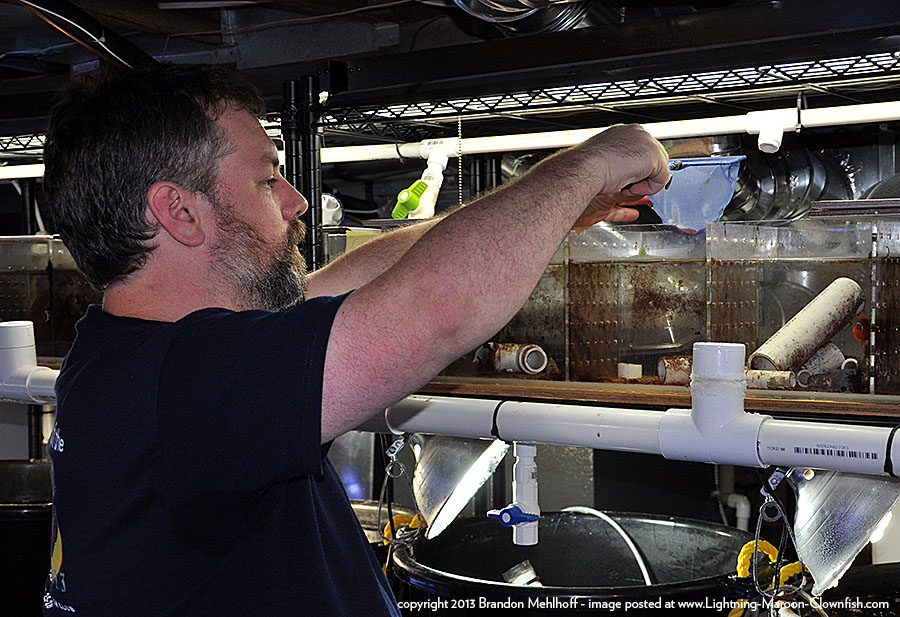
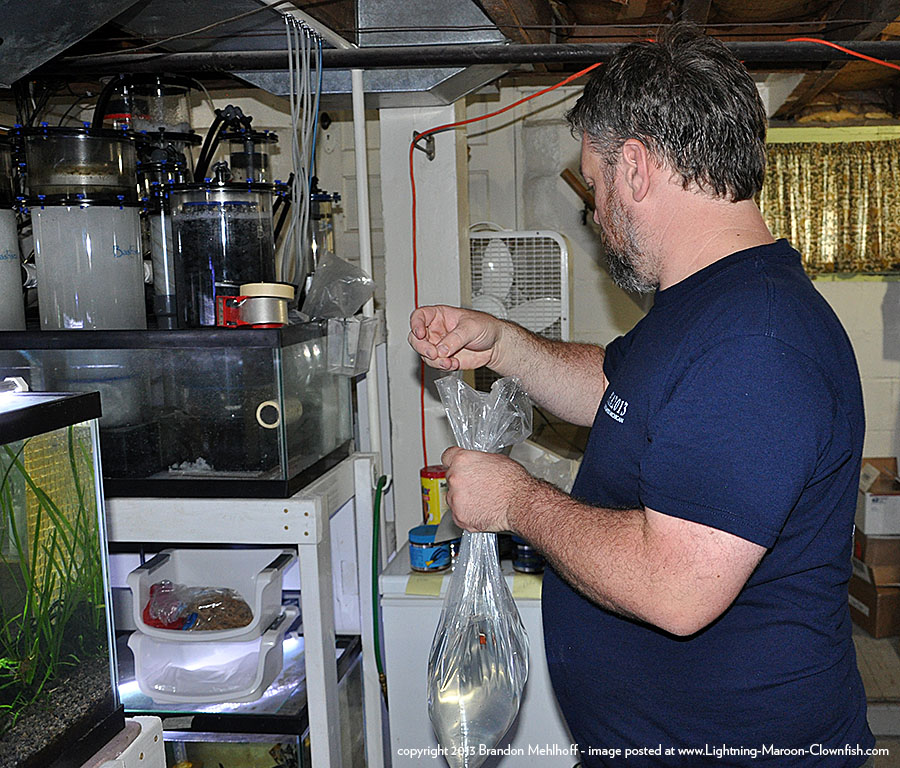
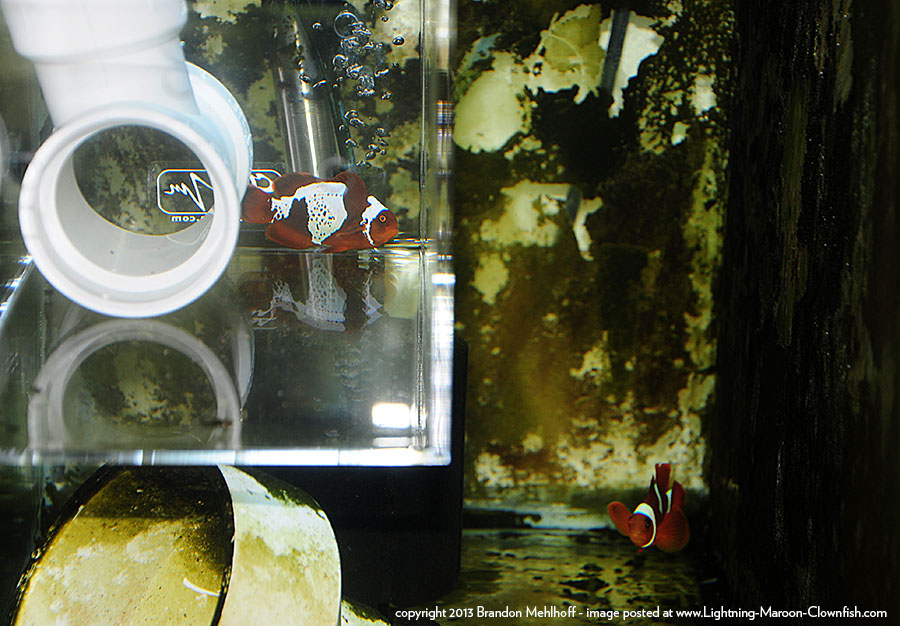
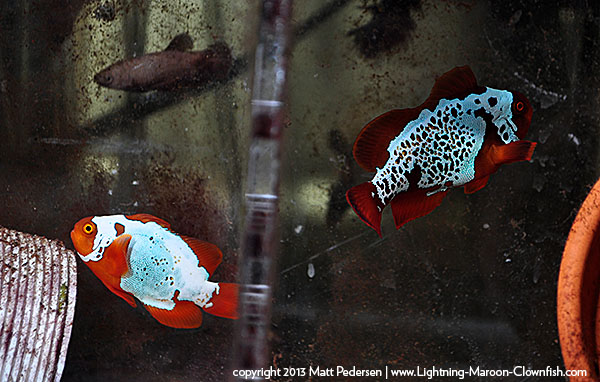
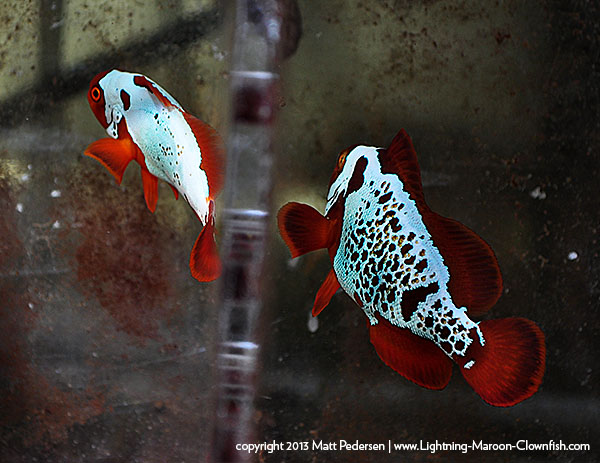
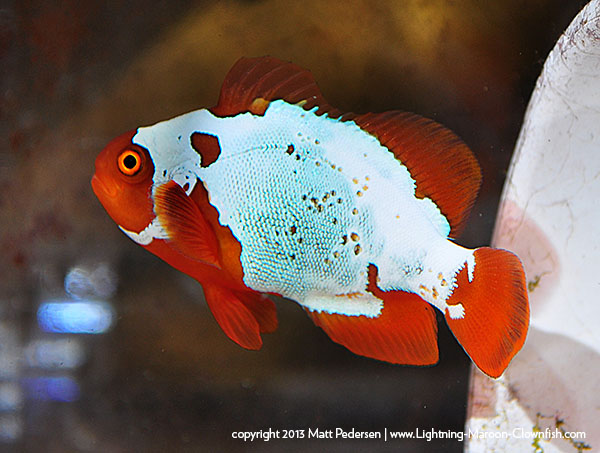
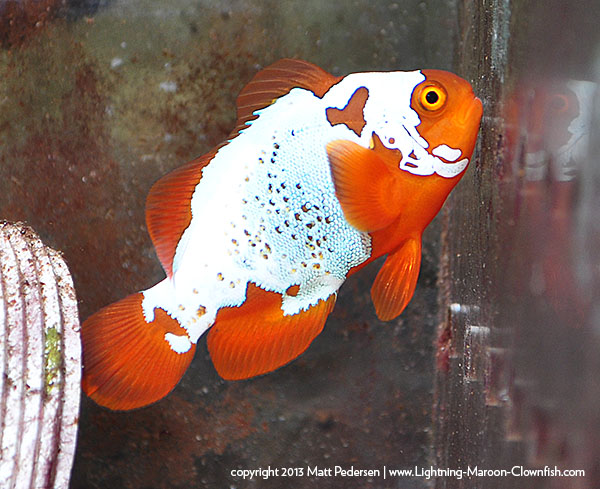
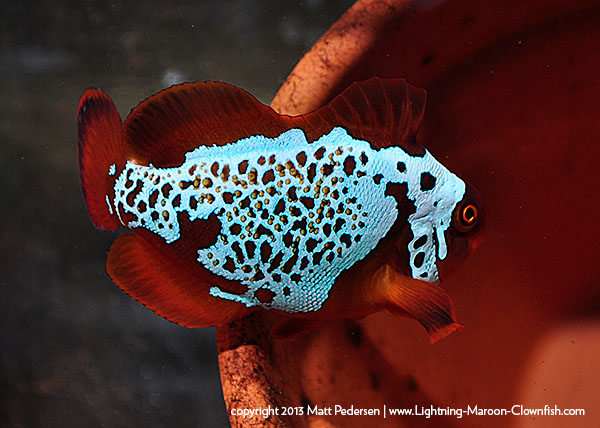
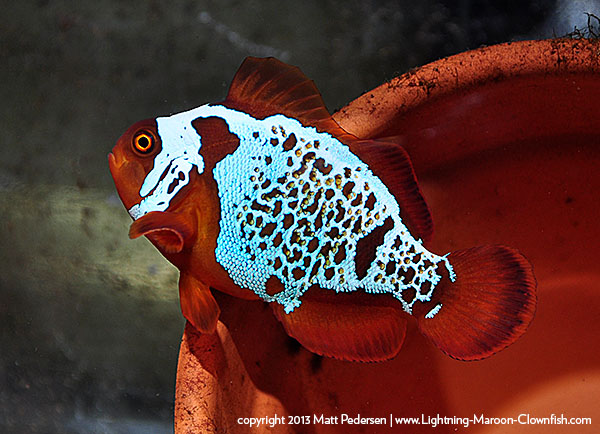
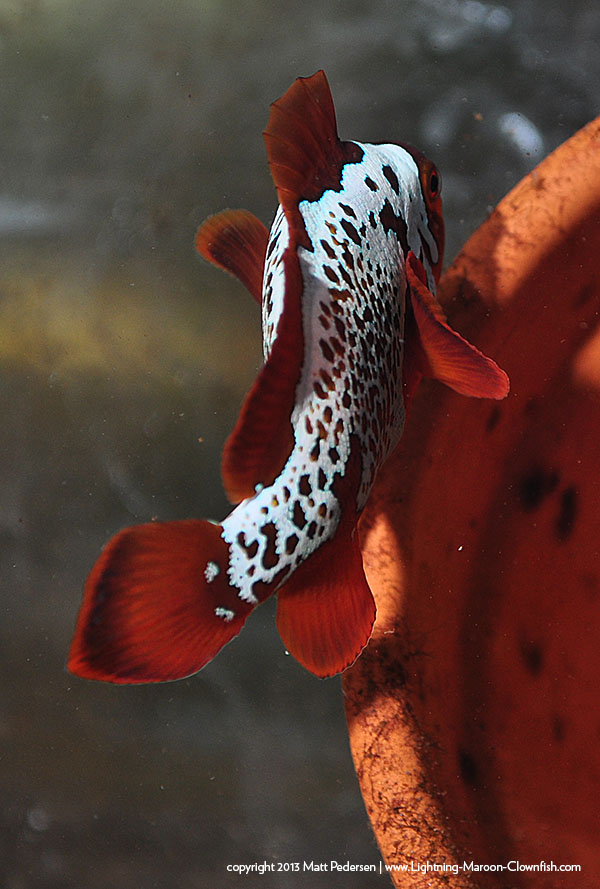
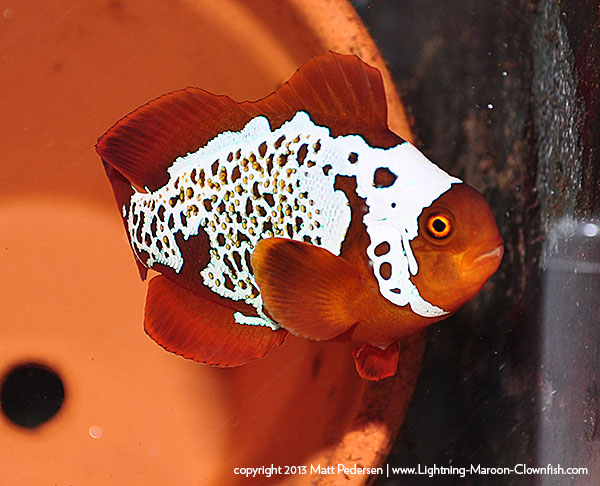
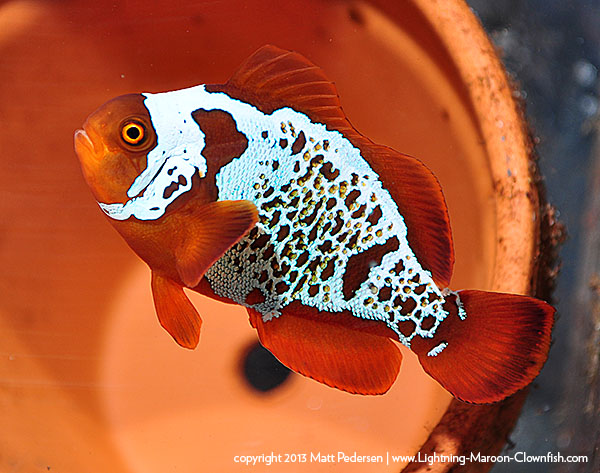

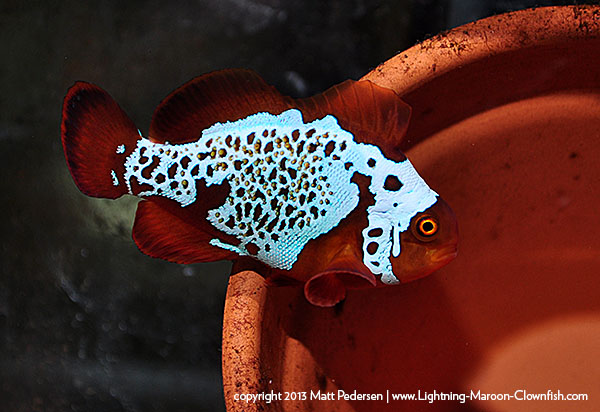
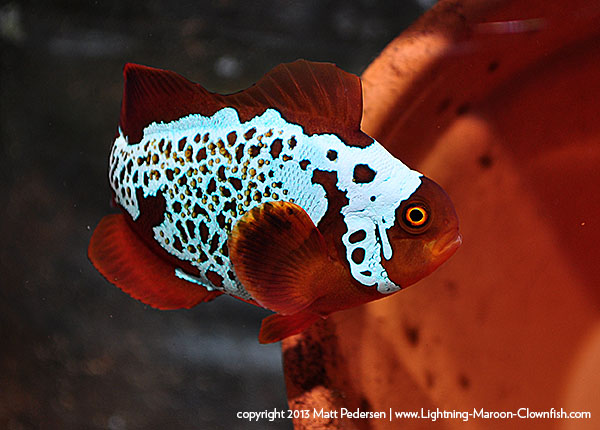
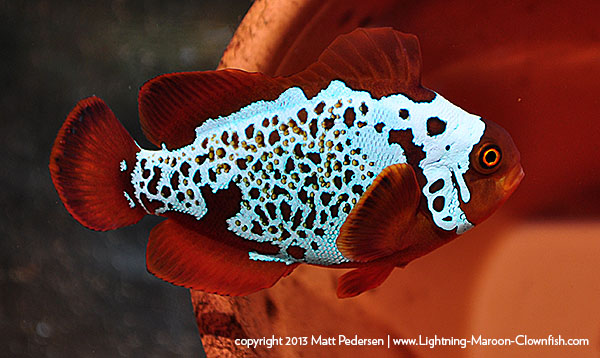
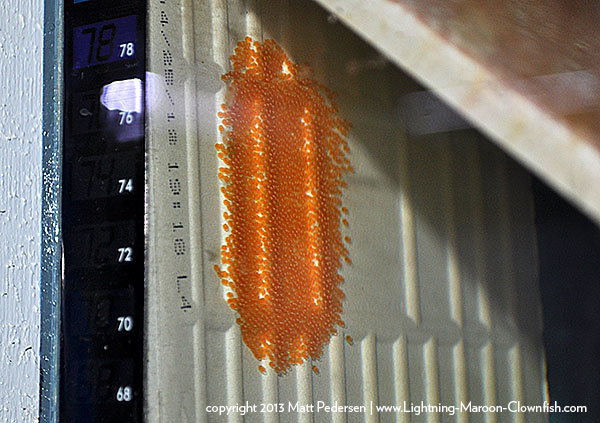
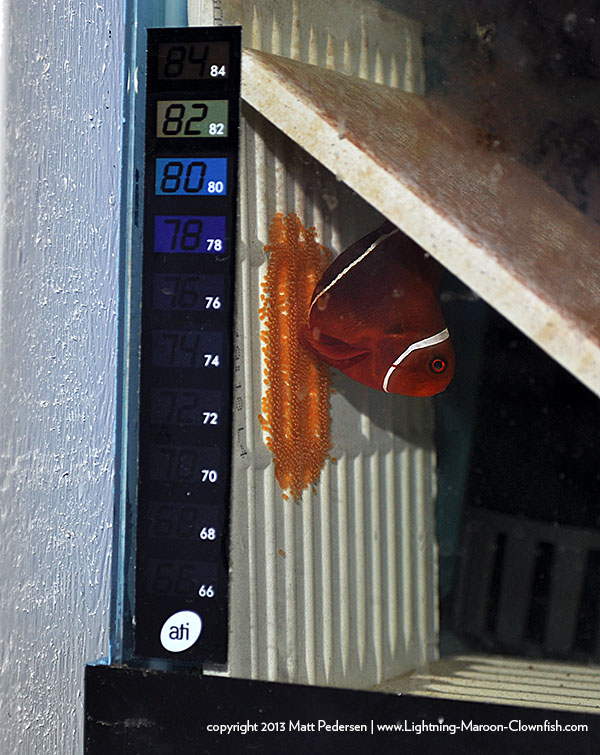

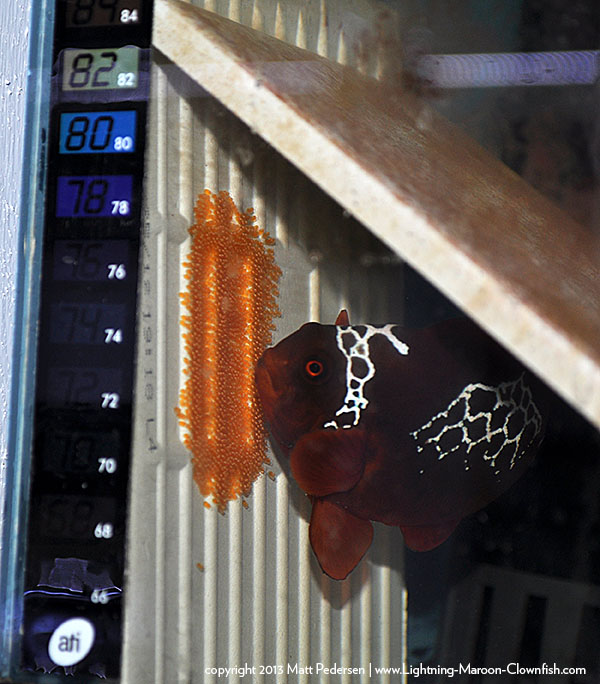
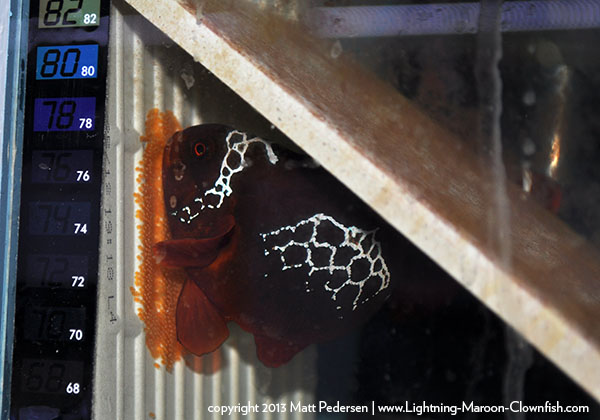
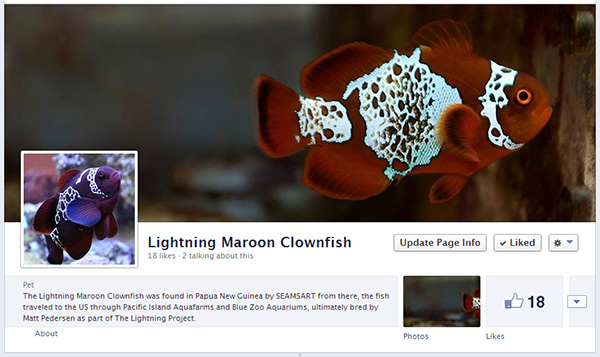

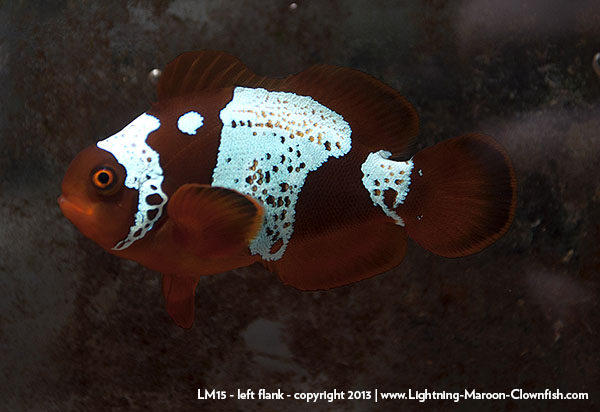

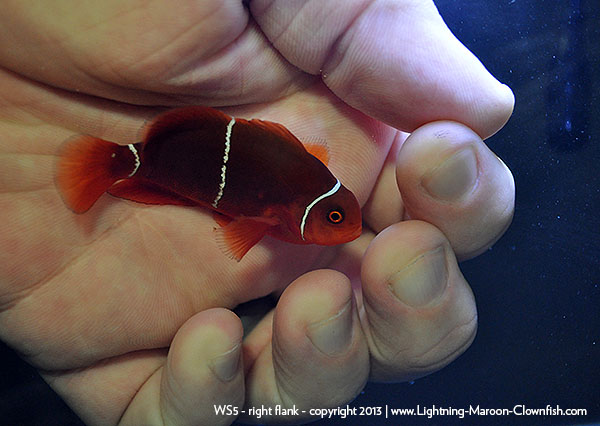
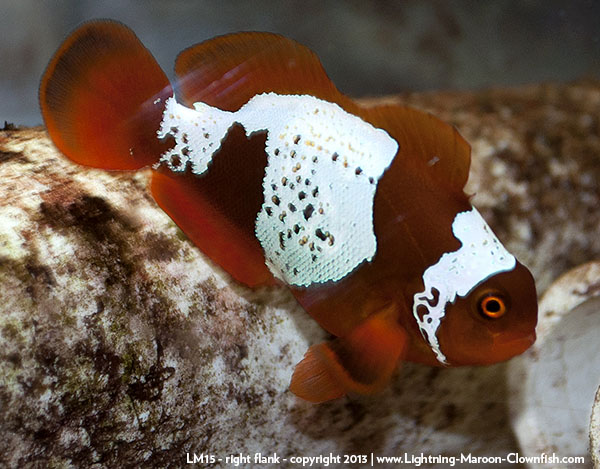
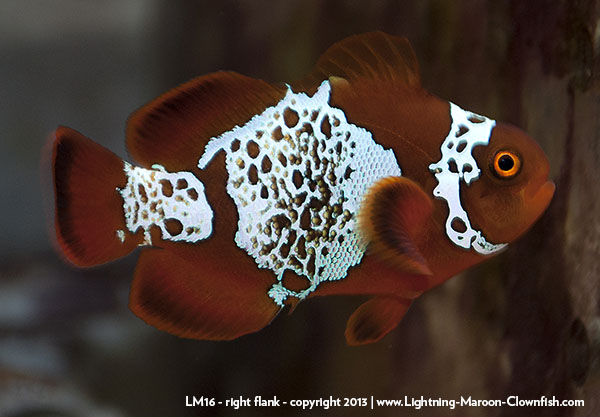










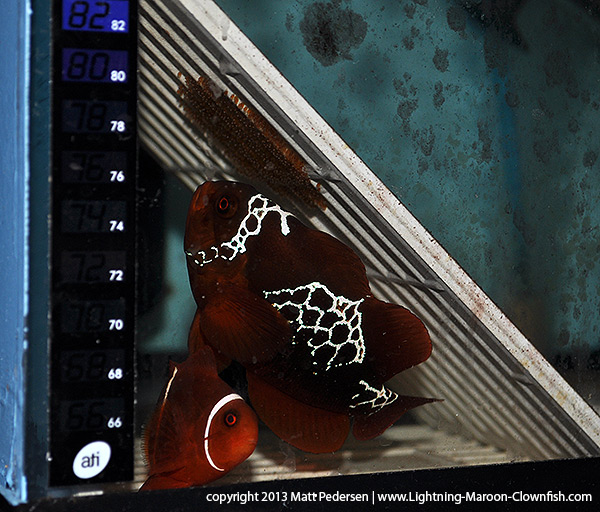
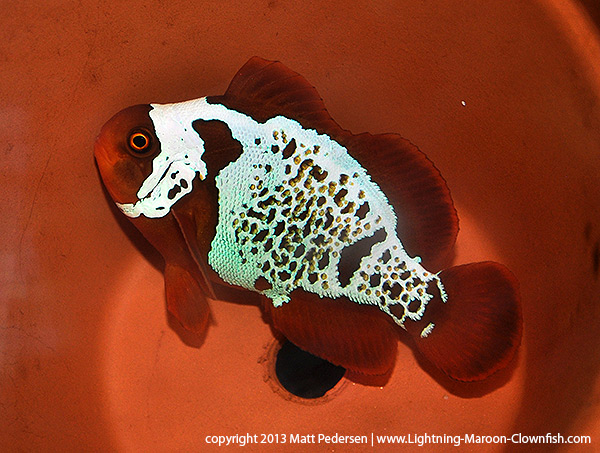
Recent Comments